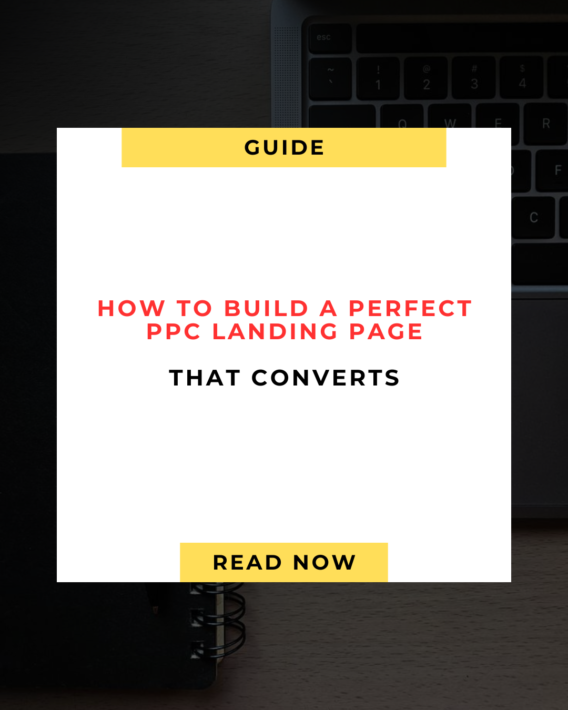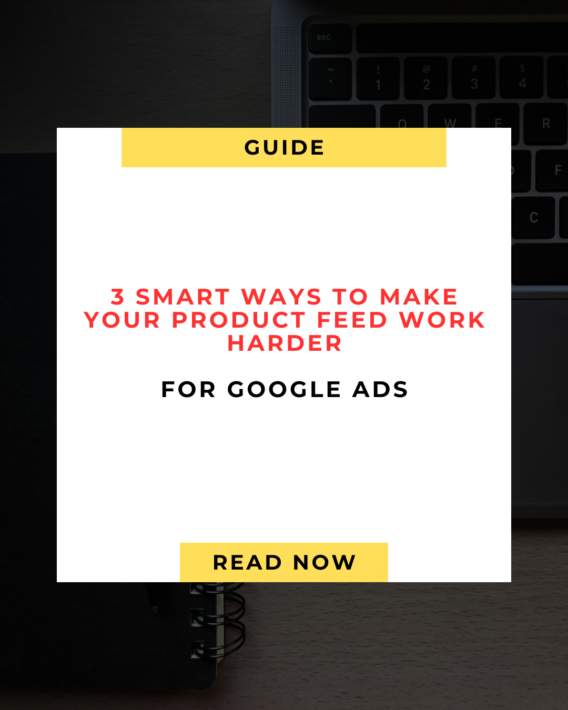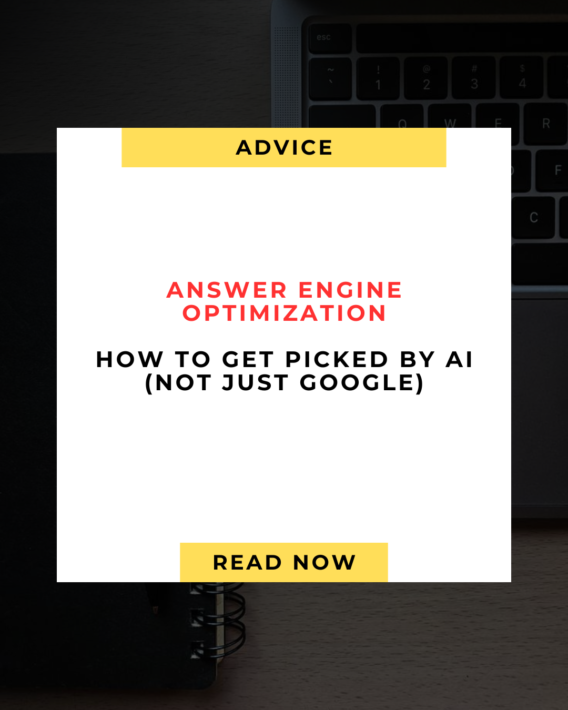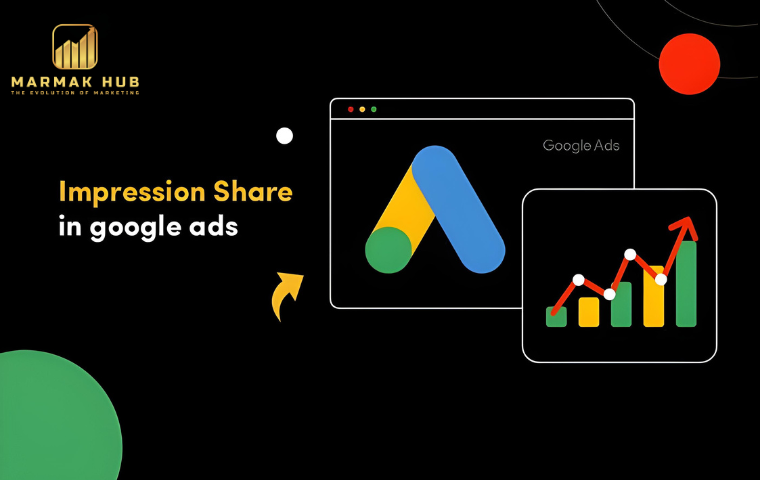
Impression Share in Google Ads is a crucial metric that reveals how frequently your ads are shown compared to their potential reach. This indicator plays a vital role in assessing the visibility and effectiveness of your advertising campaigns. In this article, we’ll delve into the concept of Impression Share, discuss its significance, and provide strategies to help you increase.
What is Impression Share in Google Ads?
Impression Share (IS) refers to the percentage of impressions your ads receive out of the total available impressions. This metric provides valuable insights into how frequently your ads are shown compared to their potential reach, helping you gauge the visibility and performance of your campaigns.
Is Impression Share Still Important in 2024?
With the variety of PPC metrics available, you may wonder how relevant Impression Share really is. Its significance largely depends on your particular marketing goals and objectives.
The advertising landscape is changing rapidly, as demonstrated at Google Marketing Live 2023. With new features like the Search Generative Experience and AI-generated display assets, competition is intensifying. As more advertisers create top-notch ads, maintaining a strong Impression Share is becoming essential for those managing standard search, shopping, or display campaigns. In this competitive environment, Impression Share is more important than ever to ensure your ads are consistently visible in relevant searches.
Additionally, businesses with an Impression Share above 90% saw a 15% boost in brand recall and a 12% increase in customer engagement metrics year-over-year. These figures highlight the significant influence of Impression Share on brand awareness and customer interaction, emphasizing its critical role in effective digital marketing strategies.
What is a Good Impression Share?
A solid Impression Share in Google Ads typically falls between 70-90%.
For branded keywords, achieving an Impression Share above 90% is optimal, reflecting strong visibility and dominance in search results associated with your brand.
For non-branded keywords, which tend to have more competition, an Impression Share around 70% is regarded as strong, showing that your ads are effectively competing within the broader market. Sustaining these levels ensures that your ads consistently appear in relevant searches, maximizing your chances for clicks and conversions.
How to Calculate Impression Share?
Calculating Impression Share in Google Ads is simple when you have the correct data. Here’s the formula you can use:
Formula:

- Impressions Received: The number of times your ad was actually shown to users.
- Total Eligible Impressions: The total number of times your ad had the potential to be shown, determined by your targeting settings and participation in ad auctions.
The formula determines the percentage of times your ad was displayed compared to the total opportunities it had to be shown. Multiplying by 100 converts this ratio into a percentage, making it easier to understand and compare.
5 Types of Impression Share
Each type offers unique insights into your ad performance and highlights areas for improvement. Here are the 5 key types of Impression Share you should be familiar with.
Search Impression Share (SIS)
Search Impression Share tracks the percentage of impressions your ads receive compared to the total they could potentially achieve on the Search Network.
Search Impression Share provides valuable insights into your ad visibility:
- High Search Impression Share: Indicates that your ads are frequently shown to your target audience, suggesting effective bidding strategies and high ad relevance.
- Low Search Impression Share: Highlights areas for improvement, such as increasing bids, enhancing ad quality, or expanding your budget to capture more impressions.
Various factors can affect SIS. Budget constraints can limit impressions, making it crucial to allocate enough funds. Ad Rank, which depends on your bid, ad quality, and landing page experience, is also essential. Intense competition can decrease your share as more advertisers vie for the same impressions. Regularly reviewing and adjusting your strategies based on SIS data can help sustain or enhance your ad visibility, ensuring you effectively reach your target audience.
Display Impression Share
Like Search Impression Share, Display Impression Share reflects the percentage of impressions your ads received on the Display Network compared to the total eligible impressions. This metric offers valuable insights into your ad visibility across platforms such as YouTube, Gmail, and various websites within Google’s Display Network.
Display Impression Share helps you understand how often your ads are shown to your target audience on the Display Network:
- High Display Impression Share: Suggests effective bidding strategies and relevant ad placements, meaning your ads are reaching your audience frequently.
- Low Display Impression Share: Indicates opportunities for improvement, such as increasing your budget or enhancing ad quality to capture more impressions.
Several factors can influence Display Impression Share, including budget constraints, Ad Rank, and competition within the Display Network. Regularly monitoring and adjusting your strategies based on Display Impression Share data can help you maintain or improve ad visibility, ensuring your campaigns effectively target your audience.
Search Lost Impression Share (SLIS)
If you’re curious about why your ads aren’t showing as frequently as possible, Search Lost Impression Share is the metric to examine. SLIS reveals the percentage of impressions your ads missed out on due to factors such as budget limitations or low Ad Rank.
Search Lost Impression Share sheds light on specific areas for improvement:
High Search Lost IS (Budget): A high value here indicates that budget limitations are causing your ads to miss out on potential impressions. To boost visibility, consider increasing your budget.
High Search Lost IS (Rank): When this metric is high, it signifies that a low Ad Rank is preventing your ads from appearing. Improving your bid amount, ad relevance, and landing page experience can enhance your Ad Rank and help capture more impressions.
Other factors, such as seasonal competition and shifts in user behavior, can also affect SLIS. By closely monitoring SLIS data and making the necessary adjustments, you can minimize lost impressions and ensure your ads reach a broader audience on the Search Network.
Display Lost Impression Share (DLIS)
When assessing why your ads aren’t performing as expected on the Display Network, Display Lost Impression Share is a crucial metric. DLIS indicates the percentage of impressions your ads missed out on due to factors such as budget limitations or issues with ad relevance.
Display Lost Impression Share highlights specific issues affecting your ad visibility:
High Display Lost IS (Budget): A high value here suggests that your ads are missing impressions due to an insufficient budget. Increasing your budget can help you capture more impressions and enhance visibility.
High Display Lost IS (Ad Relevance): When this value is high, it indicates that low ad relevance is causing your ads not to be shown. Improving your ad targeting and content can enhance relevance and help capture more impressions.
Factors like ad fatigue (where users see the same ads too frequently) and a competitive bidding environment can affect DLIS. Regularly reviewing DLIS data and making adjustments based on these insights can help you minimize lost impressions and ensure your ads achieve a wider reach on the Display Network.
Exact Match Impression Share (SEMIS)
Search Exact Match Impression Share measures the percentage of impressions your ads receive for exact keyword matches relative to the total eligible impressions for those specific matches. This metric helps you gauge how effectively your ads are targeting users who search for exactly what you are aiming for.
Exact Match Impression Share provides invaluable insights:
High SEMIS: Indicates that your ads are frequently displayed for exact keyword matches, reflecting strong targeting and relevance.
Low SEMIS: Reveals missed opportunities where your ads are not appearing for exact matches of your targeted keywords. To capture more impressions, consider adjusting keyword bids, refining match types, or increasing your budget.
Factors such as keyword relevance, bid competitiveness, and match type specificity can influence SEMIS. Regularly monitoring this metric helps ensure your ads effectively capture search traffic for your most relevant keywords, leading to improved campaign performance and efficiency.
How to Increase Impression Share in Google Ads?
Based on our experience, boosting Impression Share in Google Ads requires a mix of strategic adjustments and ongoing optimization.
Increase Your Budget
A limited budget can restrict how often your ads are shown. By increasing your budget, your ads can be displayed more frequently throughout the day, which helps boost your Impression Share.
How to Implement:
Review Campaign Performance: Identify campaigns that are performing well and could benefit from additional funding.
Allocate More Funds: Increase the daily budget for these high-performing campaigns, ensuring it fits within your overall marketing budget.
Monitor and Adjust: After raising the budget, track performance to see if Impression Share and overall results improve. Make adjustments as necessary based on the performance data.
Use Target Impression Share Bidding (TIS)
Target Impression Share is a bidding strategy in Google Ads aimed at maximizing your ad’s visibility. By setting a target percentage for the impressions you want your ads to achieve, Google Ads automatically adjusts your bids to help reach this goal.
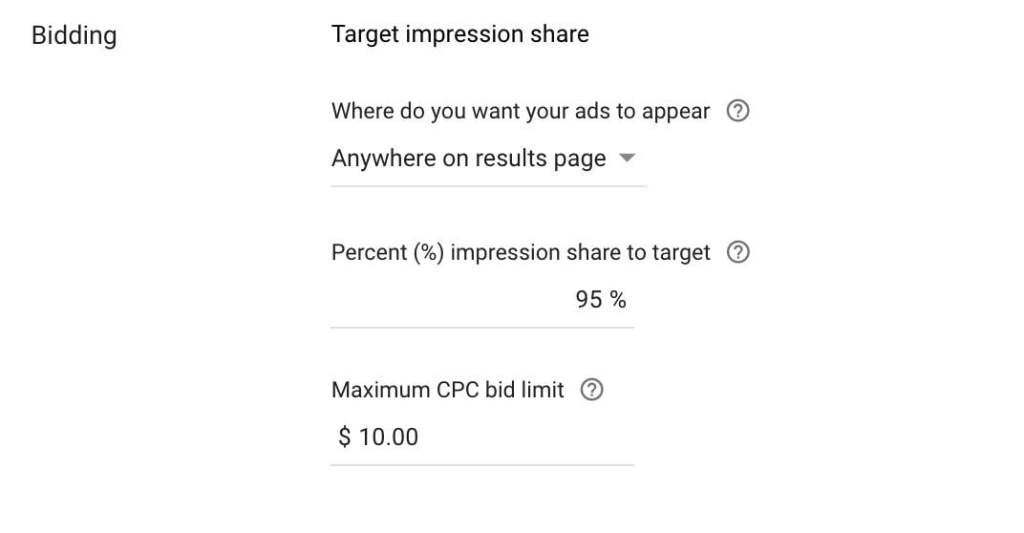
How to Implement:
Set a Target: Choose the desired impression share percentage (e.g., 75%).
Select Placement: Decide where you want your ads to appear—anywhere on the page, at the top of the page, or at the absolute top.
Set a Maximum CPC Bid Limit: Define the highest amount you’re willing to pay per click.
Monitor and Adjust: Regularly review performance and make adjustments to your target or bid limits as needed to optimize results.
Formula:
Improve Ad Quality
Improving ad quality enhances your Quality Score, which can reduce your cost-per-click (CPC) and boost your ad’s placement on the search results page. This results in greater visibility and more impressions.
How to Implement:
- Enhance Ad Relevance
- Improve Expected Click-Through Rate (CTR)
- Optimize Landing Page Experience
Focus on Location
To boost your impression share, consider narrowing your target location. By focusing on a smaller geographical area, the pool of eligible users is reduced, making it easier to achieve a higher impression share. This approach is especially useful for local businesses looking to attract nearby customers who are more likely to convert.
Current Setting:
- Target Area: Entire Austin metropolitan area
- Impression Share: 50%
To boost your impression share, you opt to narrow your target location to the downtown area where your coffee shop is situated.
New Setting:
- Target Area: Downtown Austin
- Impression Share: 80%
Wrap up
Understanding and optimizing your impression share in Google Ads is crucial for enhancing your ad visibility and improving campaign performance. Impression share metrics provide valuable insights into how often your ads are shown compared to their potential reach. This information helps you pinpoint areas for improvement and develop more effective strategies.
For additional tips and detailed strategies on optimizing your Google Ads campaigns, visit MARMAK HUB website. Our resources offer a broad range of topics designed to help you maximize your advertising efforts.

